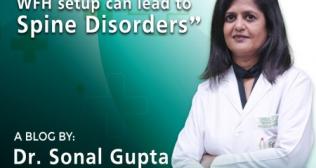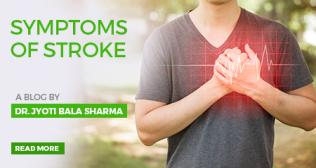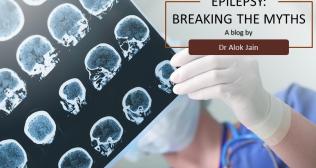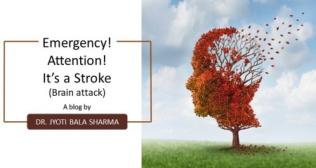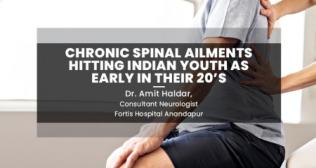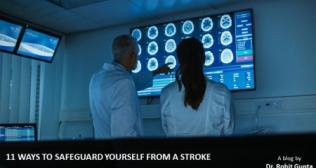
Neurology
Deep Brain Stimulation In Parkinsons Disease
Deep Brain Stimulation In Parkinsons Disease Feb 06, 2020

Parkinson’s disease (PD) is almost as old as man himself. The earliest description of the disease can be found as far back as 12th century BC. As early as 300 BC Charaka has described the classic triad of PD. It was first described in modern time in the 18th century by James Parkinson’s, after whom the disease is named.
PD is a progressive movement disorder affecting both males and females, most commonly after the age of 60, but younger patients may also suffer from it. The exact causes for the disease are unknown, but the motor symptoms result from death of cells which produce dopamine in the brain. PD is associated with both genetic and environmental factors, the most common form is called Idiopathic PD where the underlying cause in unknown.
More than 6.2 million people worldwide are estimated to be suffering from the disease. The classical triad of PD is tremors (shaking of hand), bradykinesia (slowness of movement esp. gait), rigidity (stiffness), but as the disease advances it can urinary symptoms, depression, dementia and other problems.
Treatment:
The first breakthrough in treatment came in the 1960’s when Levodopa became available for clinical use. Other classes of drugs have also become available for treatment over time but none have been as effective as levodopa. The next big revolution was deep brain stimulation (DBS) first described in late 1980’s and approved by FDA in 2002.DBS surgery is a multidisciplinary activity and requires close coordination between the treating neurosurgeon and neurologist and ideally done in specialized clinic setting. Benefits of surgery are improvement in the motor symptoms of PD thus resulting in improved quality of life along with reduction in the doses of various drugs and thus their side effects. However, as PD is a progressive disorder DBS cannot offer cure but can significantly improve the patient’s quality of life.
The ideal patient for DBS are patients who are suffering from Idiopathic PD and are still dopamine responsive but are not able to take an adequate dose due to severe side effects, or patients having significant and disabling on and off symptoms. Patients having significant psychiatric symptoms may need to be evaluated further and may sometimes be excluded. Though DBS was initially reserved for patients with advance PD new trials have shown its sustained benefits in early PD also.
Complications:
Like any surgery DBS carries a risk of certain complications. They can be divided into procedure and implant related like bleeding, infection, lead misplacement, lead breakage. Complications of DBS per se can range from behavioral changes, depression, abnormal motor movements, visual disturbances, disbalance etc. The side effects are normally transient and can be controlled with appropriate programming. As DBS is a reversible procedure most complications can be controlled.Conclusion:
DBS is a safe and effective treatment for patients with PD with severe side effect of medication. It should be considered as complimentary to medical management and not a substitute. DBS is also currently used in patients with Dystonia, Essential tremors, OCD. Studies are ongoing for its use in various other psychiatric conditions.FAQ:
What is DBS?
Deep Brain Stimulation is a surgery where leads are implanted deep inside the brain to stimulate certain areas.
Is DBS a new procedure?
DBS was first described in 1980’s and approved by FDA in 1997 for tremors. It has a proved track record of over 20years. Over 160,000 patients worldwide have undergone DBS.
DBS can be done for which conditions?
DBS is currently approved for Parkinson’s disease, Essential tremors, dystonia, OCD. Trials are going on for other diseases. PD is most condition treated
Who needs DBS?
Patients with PD who are having severe side effects to drugs or with disabling on and off symptoms are candidates for DBS
If DBS is so effective why have, I been not advised for it?
As very few centers are routinely performing DBS, large number of medical practitioners may not be aware about its benefits. If you or a loved one is suffering from PD then its recommended to meet a movement disorder specialist or to attend a PD clinic.
Will DBS cure my PD?
No it will not. DBS is one more tool in to control the motor symptoms of PD so as to improve the quality of life.
Post DBS can I stop all my PD medicines?
Post DBS most patients do have a significant reduction in the number and doses of there medication. Rarely are patient able to completely stop all medicines. The aim of DBS is to complement the medicines and not replace them
Are there major complications of DBS?
Like any surgery DBS can also have complications. But risk of major complication is quite low. Also, as DBS is a reversible procedure, it can always be switched off or removed.
What is the long term follow up in DBS?
Immediate post-surgery the patient may need to come to OPD every few weeks till the neurologist is able to achieve optimal programming. Once that is done then patients only need to follow once in few months.
Does the DBS battery need frequent change?
DBS battery or IPG can be off 2 types. Non rechargeable which has a fixed capacity and may need replacement after a 3-6years depending on the programming parameters, and a rechargeable type which can be recharged as per need by the patient just like a mobile battery.
I want to know more about DBS, who do I contact?
Fortis hospital Vasant Kunj has recently launched a Parkinson’s clinic for comprehensive treatment of PD patients. The clinic is held on every …….. Friday and number to be contacted is ……









